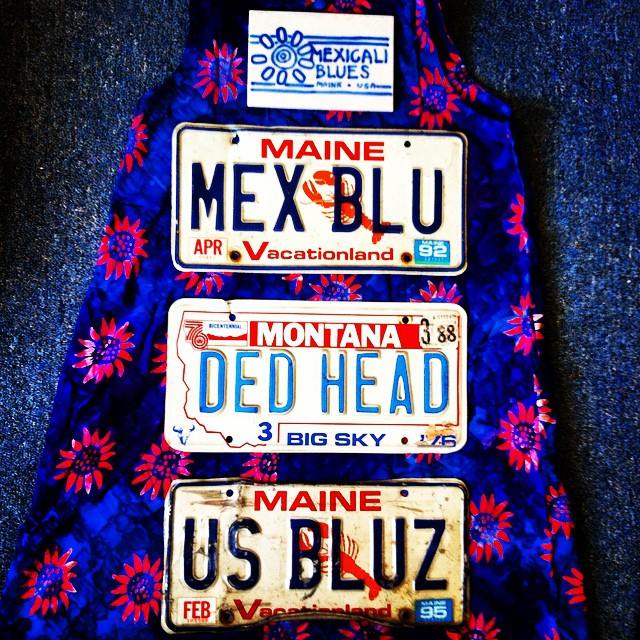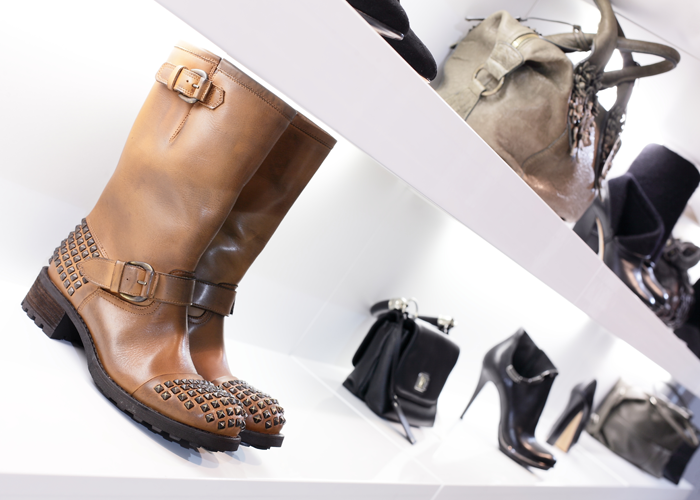At our 2016 Retail Pro Americas Summit, we asked retailers building their omnichannel strategy with Retail Pro why they’re doing it, what it takes to make it happen, and where they are in implementing their strategy. Here’s what they said.

Allow us to introduce…
Our retail panelists. See their bios way below!

What’s inside:
Going Omnichannel
Supply chain integration at Earthbound Trading Co.
Balancing D2C and wholesale at Burton Snowboards
Decreasing the cost of endless aisle at Mexicali Blues
Is omnichannel the end of brick and mortar retail?
Omnichannel generation: millennials’ habits impact retail strategies
Future directions for building omnichannel
Going omnichannel
Dan Jablons Our panel today is about omnichannel. Topher, you’ve done a lot of omnichannel work already, and Eric and Marcelo are starting to work out their omnichannel strategies for Burton Snowboards and Earthbound Trading Company, respectively.
Topher, you’ve done the most omnichannel work out of anyone in the room, apparently. What made you say, “You know what? We have to attack this thing. We have to go after it”?
Topher Mallory We thought about where we saw the largest opportunity and that was online. There’s a lot of overlap with the product lines but as far as the business goes, we’ve only got 6 stores plus our online store, and our warehouses are 2000 square feet.
We wanted to leverage our in-store inventory like we showed in the video and the biggest things was data architecture. That’s where UniteU came in.
The biggest challenge was really finding someone who would listen to somebody small like we are, see the opportunity we saw, and create a data architecture that could go both ways.
Obviously the big picture of Omni is endless aisle and different channels that might not even be in the marketplace yet. Today, it is taking that store inventory and leveraging it to make our online offering larger.
We thought about where we saw the largest opportunity and that was online.
Topher Mallory
Check out their video here:

Topher Mallory of Mexicali Blues shares how he built his omnichannel strategy
Dan So for you, there was an online opportunity but it was also about leveraging existing inventories and getting better sales.
Topher Exactly. Then we started to see that we needed more transparency in the supply chain and all that’s how we came to all those challenges we’re dealing with today.
Dan Eric, what drove your decision to go after omnichannel?
Eric Bergstrom Actually, something quite similar. We have a real strong online business. We have 13 stores in the US. About this time every year, we sell out of products online but these same products are still sitting in stores. Our objective is to make that store inventory available on the web so that a customer can find it. That way we would really leverage the inventory and sell it.
Marcelo Fleitas We have 136 stores nationwide and we’re trying to accomplish something similar to Mexicali Blues. The customers of today’s world require a lot of maintenance. They request a lot of information so we need to provide it.
That’s what Earthbound is trying to do.
We’re trying to provide information from our vendors to the store for a particular item and create an experience for our customers through mobility. We have a segmented customer profile and tools to understand what the customer wants, and we deliver that.
Top
Supply chain integration at Earthbound Trading Co.

Earthbound Trading Company is a lifestyle shop for the nomadic spirit who embraces individuality and craves exploration.
I was amazed at how Retail Pro Prism® works, because the platform is exactly what we need. The last piece of the puzzle is to feed that information to Retail Pro® and because it’s based on APIs, everything can be integrated.
Marcelo Fleitas
Dan One of the things that I was told about the tools you’re using, Marcelo, is that you actually have been integrating various departments together. Overseas vendors and employer systems interact and talk to each other.
Marcelo That’s right. One of the biggest challenges that we have at Earthbound is collaboration. We have venders overseas and we deal with big vendors, small vendors, and various departments like accounting and the photographers who take inventory pictures for the online store.
We really had to create a collaboration tool, but not only that – we needed to create a flow between them.
For instance, in order to bring something from overseas, you have to follow a lot of customs codes and we need to make sure we capture product history for things we bring from China, from Brazil. We can’t lose that information.
So we created a portal where vendors can actually talk to us directly. All our internal departments can interact within the system, and the system enforces proper flow.
Dan I’ve got to believe that also helps you in terms of gaining more product knowledge, which helps you get more sales too.
Marcelo Exactly. I was amazed at how Retail Pro Prism® works, because the platform is exactly what we need. The last piece of the puzzle is to feed that information to Retail Pro® and because it’s based on APIs, everything can be integrated. I’m very happy that that’s the direction for Prism.
Top
Balancing D2C and wholesale at Burton Snowboards

In ’77, Jake Burton invented the Backhill – a narrow board with single strap bindings and a rope and handle attached to the nose. Life on shred begins.
Dan Eric, let me ask you a question. Burton has 13 stores but you also sell through dealerships. So now you have a situation that a lot of independent retailers get a little bit worried: Burton is going direct, and some retailers are panicking like, “That’s the end of the world. It’s over.” But there’s a lot of business to be made. So how have you had to balance the direct versus channel sales?
Eric Our primary business at Burton Snowboards in wholesaling to dealers across the globe. I have 13 stores and 1000 dealers or more. We are real careful about where we put stores. We want to put our stores where we see an opportunity to expose the brand but not step on our dealers’ toes. And then we look for other ways to try to incorporate our dealers into the exercise that we’re going through.
For example, we have a tool that we titled Send It, which allows our stores to drop-ship or custom order any product and ship it directly to the customer’s house.
We’ve opened that up to our retailers to allow them to do the same thing. They have access to all the Burton inventory, which they would have anyway because they can always reorder the product, but it’s a tool that allows them to do the same thing, use their own POS system, and ship directly.
So they’re getting the sale and they’re really in the sense just buying the one item, but it doesn’t ship to the store. It ships directly to the customer.
This functionality is something that we’ve offered out to retailers.
Top
Decreasing the cost of endless aisle at Mexicali Blues

A love of music, a passion for travel, and a mindful devotion to fun. That’s all it took to launch Mexicali Blues back in 1988.
Dan This leads into my next question, Topher, for you. You and I had a chance to talk about the concept of the endless aisle earlier a little bit.
People talk a lot about the endless aisle. I don’t think anyone knows what it really means. And you’ve mentioned to me before that the definition of endless aisle is still in motion and changing, so how do you see endless aisle right now?
Topher We did this in small, bite-sized pieces. I think it speaks to Retail Pro’s direction as to how they’re letting omnichannel unfold a little bit. We saw this ability to leverage the inventory, and we saw an increase in 50% of our orders. We were doing this all manually behind the scenes. UniteU created the architecture but we had all this in the POS and we said, “Ok, we’ll just figure this out.”
There was one employee, a woman named Lauren, whom you saw in the video. All she did was take an excel spreadsheet, dump all this data from UniteU and all our inventory data from Retail Pro. She would look for like, Monday, December 5th and then see how many of the 300 online orders have some item from the stores.
That was nuts but we saw a huge increase in number of orders and the number of items picked. We came back to UniteU after the holiday and said, “Here are all the variables,” which was great, because we could really define what online endless aisle meant.
We want to control this. We don’t want a truly endless aisle if it is going to be an unprofitable order. If they’re unprofitable, then these are the variables we should consider.
We needed a set that we could tweak by the minute, if it was needed. We needed to be able to turn store inventories on and off if there was a scheduling issue or delivery problem. We had 5 or 6 of those and we have a workflow where you can actually change those logistics.
So now we’re looking at what I need in stores and trying to think about the same thing – if we want it to be endless aisle, if we want to sell to zero. The first challenge was just seeing Lauren do all that work and saying, “Hey, this is great – we have increased revenue.” But we’ve also diminished what we’re making on every order and every product if we’re touching them 1000 times. How do we prevent that?
The first thing was an algorithm. That worked out very well and now we’re doing a lot of circling back with analytics go from that end.
We’re also working on transparency with vendors so that we can get these things in our warehouse. We’re going to roll it out in the store first with the idea of Ship-to-Store.
Then hopefully we’ll get some kind of mobile device that’s more functional. Right now we have this algorithm on an OS-based device that uses FoundryLogic technology so that when we get the order, we see what is needed for the order that’s in-store. We can see all that transparently on the UniteU level but the next step would be to take that FoundryLogic reference to UniteU or Retail Pro on some kind of mobile device.
Top
Is omnichannel the end of brick and mortar retail?

Photo courtesy of Forbes
People were very scared of brick and mortar stores dying but it all changed. It didn’t happen. We evolved.
Marcelo Fleitas
Dan There’s a lot of concern amongst the brick and mortar retailers about omnichannel. I’m often asked if there’s ever going to be an end to the world of brick and mortar and I think it’s an important question. What do you see omnichannel doing? Do you see it advancing or taking away from brick and mortar?
Marcelo Several years ago, people were talking about that. At the beginning of the summit today, Kerry Lemos mentioned that too. People were very scared of brick and mortar stores dying but it all changed. It didn’t happen.
We evolved.
We grew our communications and we’re using mobility to improve our brick and mortar. I don’t think brick and mortar will become extinct, and I think all of us are on the right track. We are improving our channels, improving our communications, using the devices, using social media to enhance our experience in-store. You guys are doing a fantastic job on doing exactly that and I’m happy that this is going to continue to happen. This is not the end of the brick and mortar store.
Omnichannel is the revival of brick and mortar.
Topher Mallory
Topher I want to add to that and say I think it’s the revival of the brick and mortar. For us, we’re enhancing a lot of the inventory-driven processes but we’re also doing the same thing with our customers.
We’re doing segmentation, which is key.
You can get your customer data and see who’s researching online but not converting there. If they come in the store, I have data about their buying history. So maybe I can bring some consumer confidence and have them looking across platforms, or maybe they’re just forever going to research online and come in-store to buy tangibly. They can try the product on and have that added value of the experience with one of our associates.
Eric It’s real similar for us. Step one working to leverage the inventory. We’re adding a customer focus as well.
Dan And Burton, specifically in terms of profiling, is looking for ways to segment the list based on the channel they came from, right? Is that part of your strategy?
Eric Yes. Today we already pull in our Retail Pro data from the stores and our e-commerce data, our customer data, our transaction history. We tie it all together in a giant database and then access that to segment customers when we send marketing emails and such. But it gets stuck there quite often so we need to get it beyond that. We need to have access to that data at the store level so we can open it on a dashboard and know what you’ve bought from us online or in the store
Top
Omnichannel generation: millennials’ habits impact retail strategies

Photo courtesy of nanigans.com
This is bigger than just millennials. In today’s retail environment you need to be available to every customer however they want to shop. Millennial or not, you just have to let the customer choose.
Eric Bergstrom
Dan It’s important to you to understand where those guys are coming from. There’s also a lot of talk about capturing the millennials. Is that a concern for you in terms of how to market to millennials?
Marcelo We have the data for it now and without that, we’re going to be behind. I think that’s a trend. I see it over and over again. We’ve adapted to this new generation of people who use smartphones. The average adult uses their device 150 times; millennials use it 1000 times a day for various things. That’s exactly the type of crowd that we need to start marketing to.
Dan Eric, are the millennials a key target for Burton?
Eric Yes, in that that age group is a big part of our key market demographically. But this is bigger than just millennials. In today’s retail environment you need to be available to every customer however they want to shop. Millennial or not, all of these options of Buy Online, Pickup In Store, etc., you just have to be available and let the customer choose.
Dan Topher, what’s your take on this? How are you marketing to millennials?
Topher With a message that’s catered to them. Hopefully. I feel like we’re trying our hardest to! And we’re trying to take the platforms they interact on and bridge them into our in-store experiences.
With non-millennials, similar to Marcelo, we communicate the story of product origins. We use words like responsibility, transparency.
We talk about how companies are producing items. Like knowing that process for this tie-dye that I’m wearing, for example. The company uses dental floss, of all things, to get this type of crazy design. There’s a video with this on our responsively designed mobile site, so they can bring up that video for a customer on the same mobile device the FoundryLogic is working on.
Dan So there are all these different channels and the key through it seems to be being able to collect data out of these channels, analyze it, leverage the inventory so you can get the most out of it, but also give your customer the option to pick this up here, there, or anywhere. They can find you and transact with you. Marcelo, where are you in all this omnichannel business?
Marcelo We have a team developing this right now. We’re hoping that in about 2 months we’ll be fully developed in that area.
Top
Future directions for building omnichannel

See the strategy and future behind the Retail Pro retail management platform
Dan Topher, you’ve got omnichannel in place. What’s next for you now in the next 12 months? What’s the next evolution for Mexicali Blues to drive excitement for the customer?
Topher Pushing it the other way. It’s the endless aisle component in the stores but really trying to define the experience. Retailers are trying to solve the inventory problem with an experience – you come in store we’ll wine and dine you all you want. Well, all our customers are coming to us saying, “No, I want that in red, and I wanted it yesterday.” So our goal is to figure out how to meld those things together.
Dan Eric, you’re starting on omnichannel. What challenges are you running into right now and how are you going to overcome those?
Eric It starts with coming to this conference! My first step is going to be migration to the Retail Pro 9, and we’re going to get that done by June.
At the same time, we’re working on the first omnichannel step from there, which is test for getting store inventory available online. We want to do that by the fall. We’ll probably only make a limited selection of inventory categories available online, just to get it started.
Those are our first steps and then we’re going from there.
Dan And Marcelo?
Marcelo We will continue to improve our collaboration systems and bring the experience to the customer. We really deliver for our customers, because, like you said, Topher, they want our products yesterday. We want to continue to deliver on that, to improve our systems, to have more mobility involved on this.
Top
Meet the Panelists
Topher Mallory | Mexicali Blues | CEO 
In just 11 years, Topher’s “all in” approach to retail transformed a laid-back import store with three brick-and-mortar locations and no website into a vertically integrated omnichannel brand. With Mexicali Blues now making millions of dollars online and off, he simultaneously launched Maine’s first grain-to-glass organic distillery, Split Rock Distilling. Both businesses show his signature approach to retail sales: authentic passion, hands-on leadership, grassroots marketing and forward-thinking financial analysis. Topher turns loyal customers into a long-lasting community and loves every minute.
You can talk retail (or rock climbing, tie dye, Maine and more) with @TopherMallory on Twitter.
Eric Bergstrom | Burton Snowboards | Director of Retail 
As Director of Retail for Burton’s US Direct to Consumer retail business, Eric Bergstrom manages the Flagship and Outlet channels, establishing the strategic direction for existing stores and identifying potential growth opportunities. For nearly 20 years, Eric has been creating and growing successful retail organizations, optimizing existing operations, and planning and designing new stores.
Marcelo Fleitas | Earthbound Trading Company | Director of Information Technology 
Marcelo Fleitas is the Director of Information Technology at Earthbound Trading Company, a Texas based company with more than 1000 employees. Marcelo has more than 10 years in the retail industry performing innovation and implementation of POS systems. He has a background in Electronic Engineering, Oracle Databases and Microsoft SQL Servers, currently pursuing his Masters of Science in IT Management.
Dan Jablons | Retail Smart Guys | Owner 
Dan Jablons is an expert retail consultant providing guidance to retailers across 15 countries. Dan helps retailers achieve their business goals through optimization of operations, merchandising, marketing and other key retail practices.
Top























